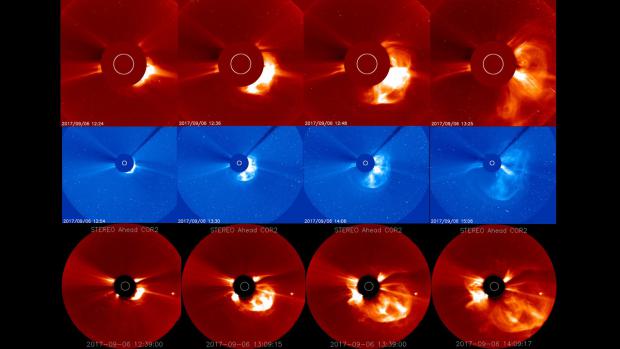
Our sun is going through a particularly intense solar cycle, and its impacts can be felt all the way down to the ground. The Sun’s outer layer recently boiled, and a coronal mass ejection (CME) was expelled from its surface on January 29. As a result, rapid solar winds were released, causing a geomagnetic storm to strike the Earth’s atmosphere. It was only on February 3 that they arrived on Earth. When this solar storm hit the earth’s atmosphere, it erupted into a raging storm on the earth. Solar storms have the potential to destroy satellites in orbit, disrupt electricity grids on Earth, and disrupt the worldwide Internet, depending on their severity. Solar storms of this magnitude are uncommon, thankfully. It did, however, have a disastrous effect.
A radio blackout was triggered by the solar storm. This is what happened in Russia, with the most serious repercussions. Since then, the country has been subjected to long periods of radio silence. Solar storms give birth to something else besides destructive power – the magnificent aurora at the extreme poles, for example.
What exactly is CME?

Simply described, coronal mass ejections (CMEs) are large-scale eruptions of solar particles caused by powerful solar flares. CMEs, which are usually caused by sunspots in the sun’s magnetic field, release massive volumes of plasma, gas, and magnetic fields into space. CMEs depart the sun at rates ranging from less than 250 kilometres per second to more than 3000 kilometres per second. CMEs can reach Earth in 15 to 18 hours, giving astronomers and scientists on the ground little time to prepare and alert everyone. Fortunately, not all solar storms move at the same speed, and they normally take a day to reach Earth. When these CMEs reach Earth, they cause solar storms with a wide range of effects.
What impact did this CME have on Earth?

“On January 29, an X-Flare player, Zone 2936, discharges a big M-Flare and launches a solar storm while in the Earth-Strike Zone (SIC),” revealed space meteorologist Tamitha Skov in her audio podcast. “Estimated solar storm arrives on schedule!” she added in a tweet. In the new SpaceWeatherWoman forecast, find out more about what’s coming up in the next few days. See where Aurora is and why amateur radio is expected. Operators and GPS users must be cautious.
Skov used an example to demonstrate her idea. “Here’s what Aurora is doing right now on VHF radio in Russia in the continuing solar storm,” she tweeted. She released a sample of a radio transmission that had been significantly hampered by a solar storm.




